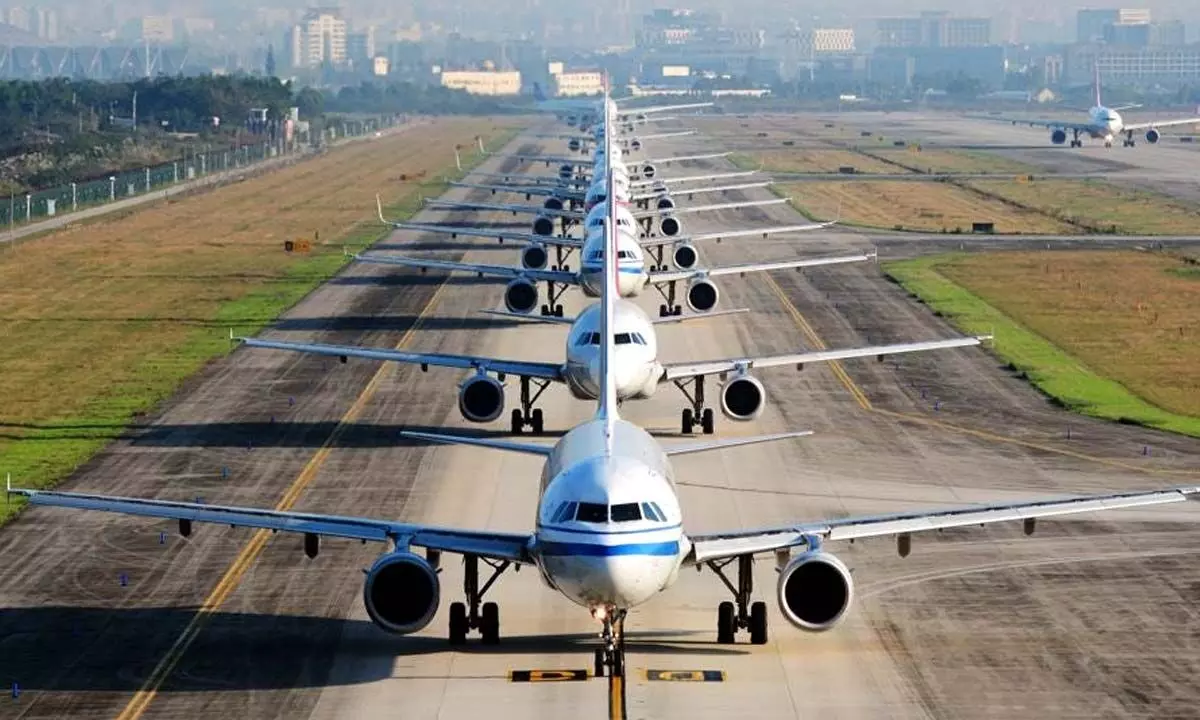Airlines gear up to manage staff shortage as travel demand soars
A report last week by ratings agency ICRA pointed out that Indian carriers recorded a year-on-year growth of 57.7 per cent in domestic passenger traffic to 84.2 million for 2021-22 (April-March), on the back of ‘fast pace of vaccination, lower incidence of fresh Covid infections, coupled with the declining intensity of the infection.’
image for illustrative purpose

A report last week by ratings agency ICRA pointed out that Indian carriers recorded a year-on-year growth of 57.7 per cent in domestic passenger traffic to 84.2 million for 2021-22 (April-March), on the back of 'fast pace of vaccination, lower incidence of fresh Covid infections, coupled with the declining intensity of the infection.'
According to Minister of State for Civil Aviation VK Singh, total job losses in airlines, airports, ground handling and air cargo sector between March 31, 2020, and December 31, 2021, was around 19,200, representing 10 per cent of the total workforce in these sectors. The total number of airline employees in India had declined from around 74,800 as on March 31, 2020, to around 65,600 as on December 31, 2021. The government has held discussions with industry participants and stakeholders to address the challenges facing the industry.
Carriers including Air India, IndiGo, Vistara and AirAsia India are conducting fresh recruitment drives to hire cabin crew members across multiple stations throughout the country.
Additionally, among foreign carriers, the Qatar Airways Group also announced onboarding 'a significant number' of new employees from India across roles such as culinary, corporate and commercial, management, cargo, customer service, engineering, flight operations, ground services, etc.
The Indian aviation sector has recently seen an uptick in hiring as a result of new airlines coming in. Akasa Air recently launched its operations and is flying from stations including Mumbai, Ahmedabad and Bengaluru, while Jet Airways is also planning to resume operations.
According to IATA, globally total traffic in June 2022 (measured in revenue passenger kilometers or RPKs) was up 76.2 per cent compared to June 2021, primarily propelled by the ongoing strong recovery in international traffic. Globally, traffic is now at 70.8 per cent of pre-crisis levels.
Just look at the issues that airlines and their passengers at some hub airports are being confronted with. These airports are unable to support their declared capacity even with the current 64 per cent slot threshold and have extended recent passenger caps until the end of October. Flexibility is still essential in support of a successful recovery.
Following the greatest shock to aviation in history, the industry is emerging rapidly from the pandemic and government-mandated travel restrictions of the past two years. Industry losses are expected to reduce to $9.7 billion this year from nearly $180 billion in red ink in 2020-21. As travel barriers fall in most regions, very strong demand is supporting expectations for a recovery to pre-Covid-19 traffic levels by 2024, with profitability a possibility in 2023.
With the limited number of available staff, companies turn to digital solutions to minimize the impact, maximize efficiency, and ensure stable operations. Digital solutions can aid you in the management of the staff you do have. For example, one solution can find better ways to schedule needed staff thus saving on required personnel per period. Needing even 10 fewer people to cover the period while maintaining the same quality of service, can save massive costs on salary alone in the long run.
While specialized tools can help businesses adapt to difficult staffing situations the real, long-term solution for staff shortage is to encourage the younger generation to join aviation more eagerly.

